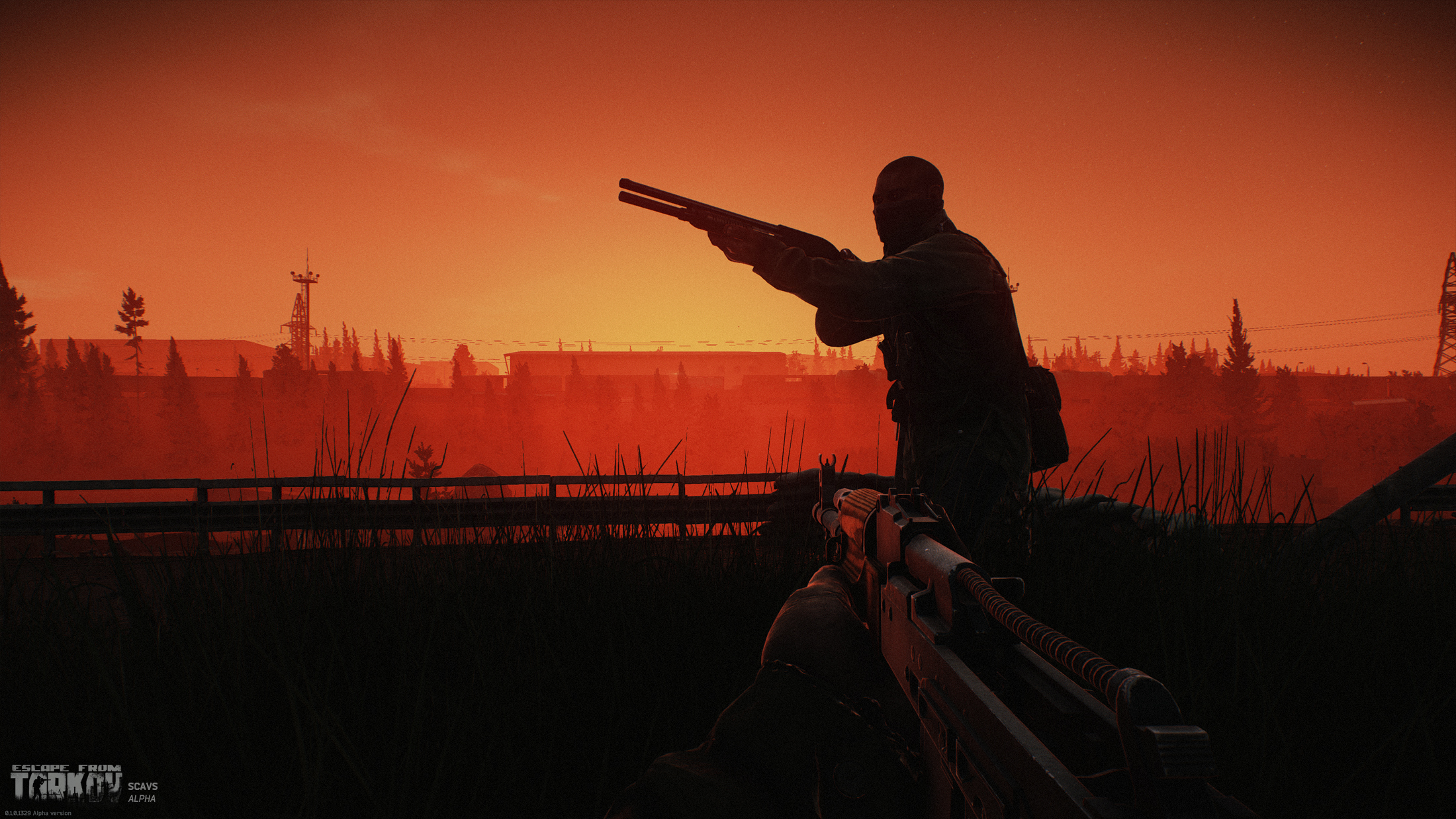College Football 26 recruiting guide for Dynasty mode
Hoover up the best high school prospects with our College Football 26 recruiting guide
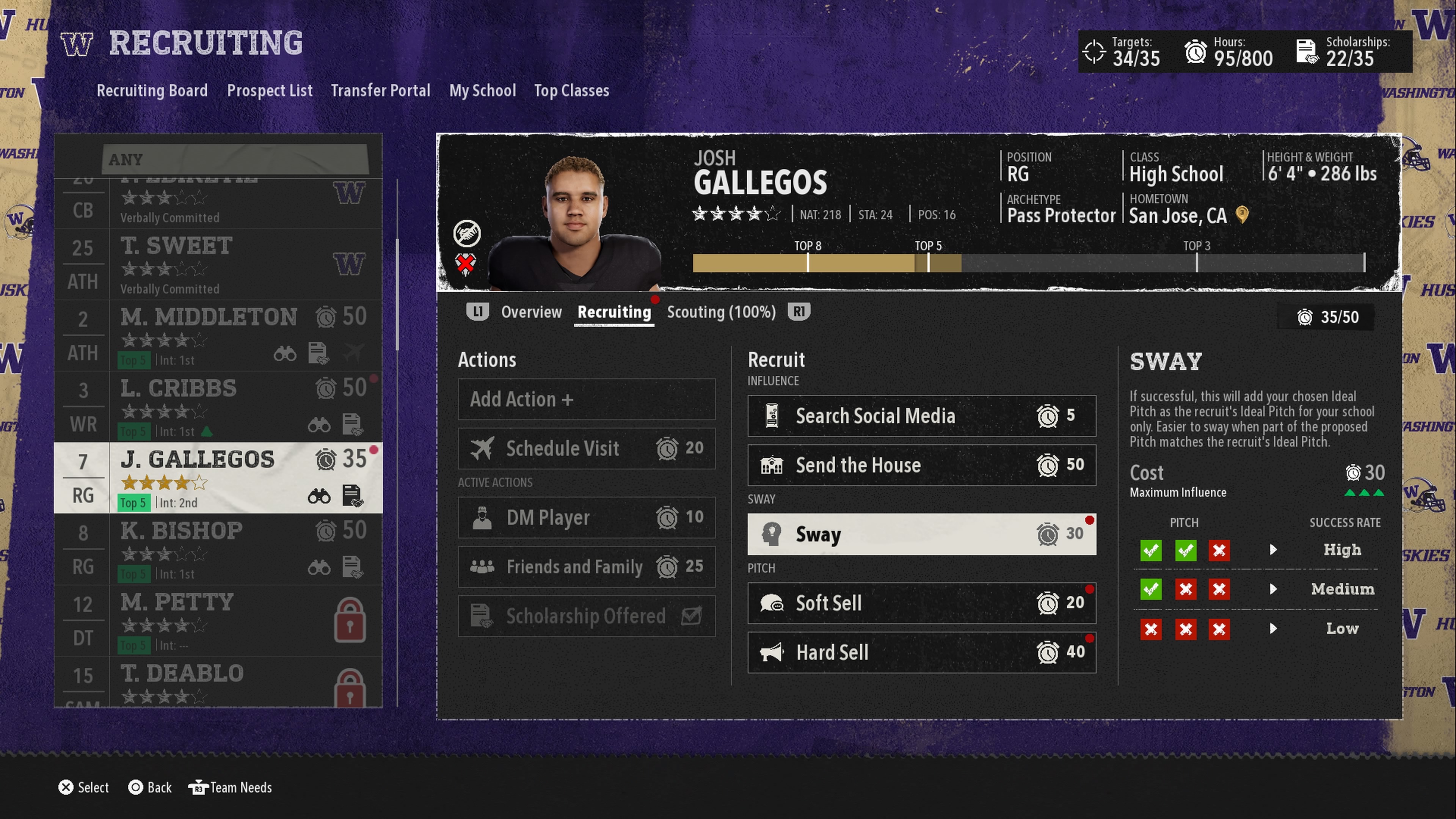
College Football 26 recruiting is essential in the most addictive mode of any current sports game – and we don't mean Ultimate Team. College Football 26 dynasty mode is just as much fun off the field as on it, thanks to the constant need to recruit new talent. Which brings us to the whole point of this feature. We explain how to secure the best young players across multiple seasons in your College Football 26 recruiting guide.
College Football 26 recruiting basics
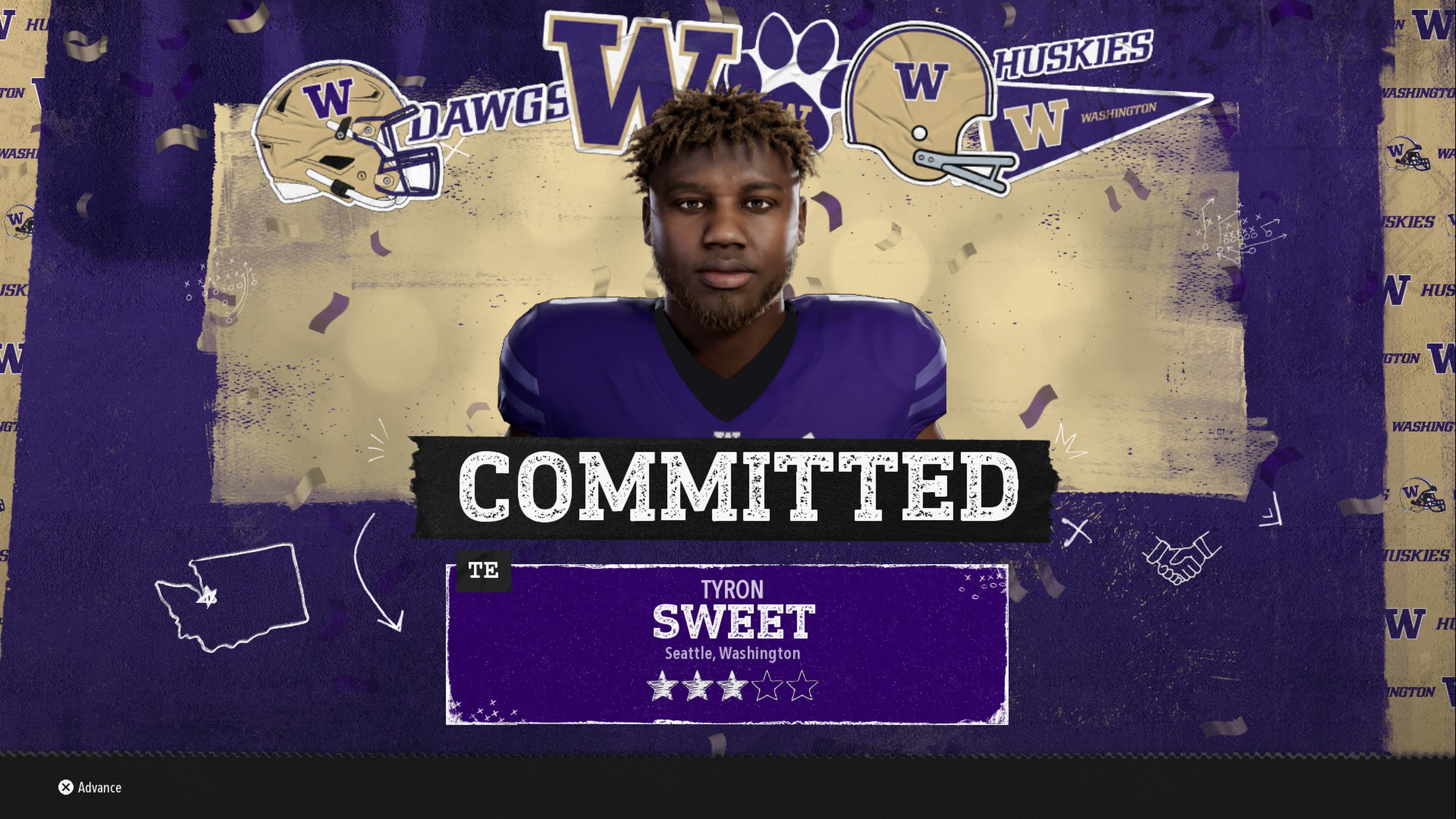
As explained in our College Football 25 recruiting guide, there are three key pillars to the recruiting model in College Football 26 dynasty mode. These affect the level of talent you're able to attract, so it's worth learning them off by heart. Here goes…
- Recruits have unique needs and motivations that you have to discover by interacting with them individually.
- Regions of the country are differentiated by player caliber, quality, and type to authentically capture high school talent based on historical real-world data.
- The different resources available mean the top schools blanket the country, while smaller schools need to be more targeted.
Your College Football 26 recruiting board
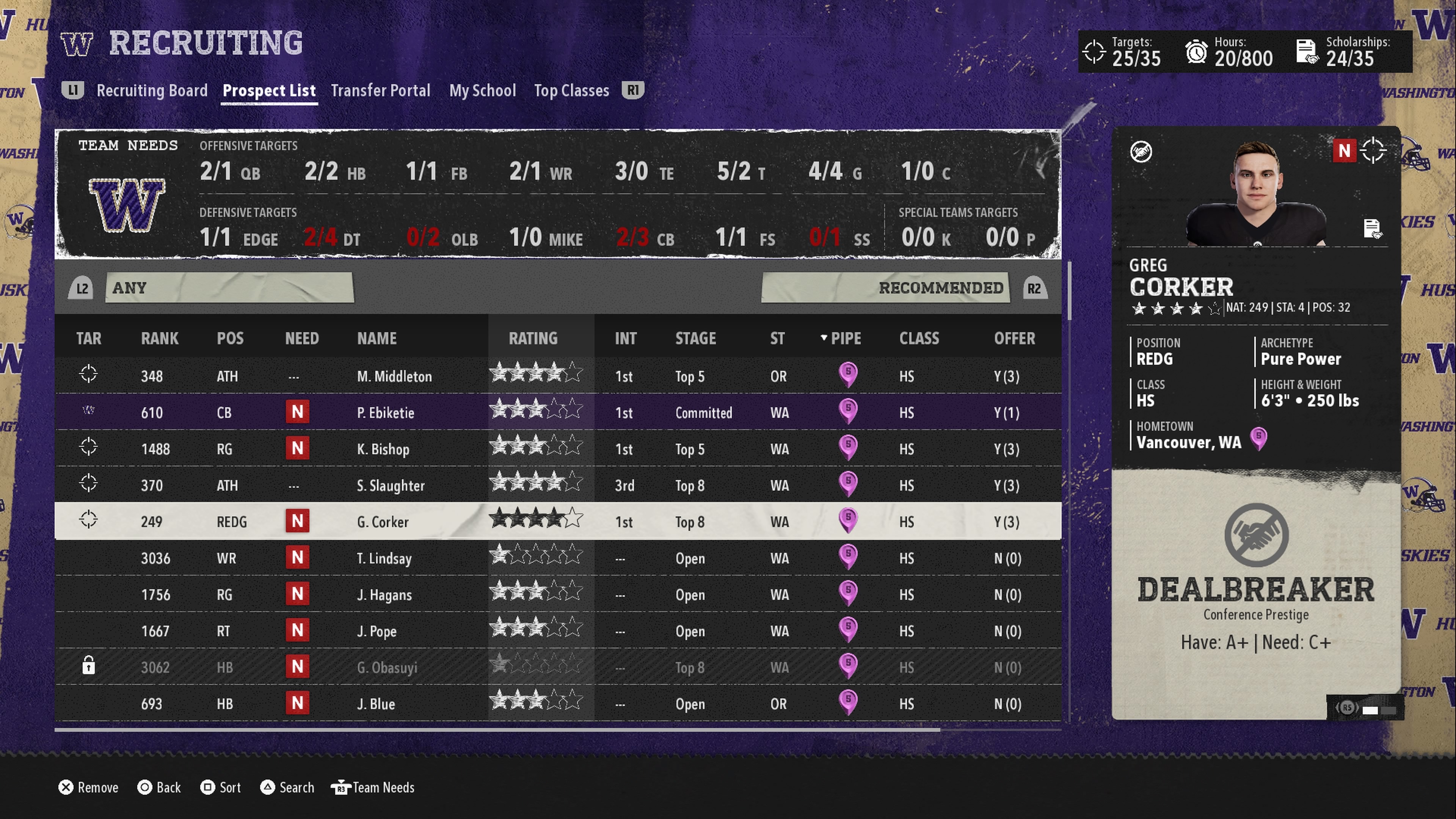
Before playing your first match of any season you get to populate your recruiting board. It can hold up to 35 targets, and you can offer up to 35 scholarships across the ensuing campaign. With literally thousands of high school players to choose from, so it’s worth investing some time on this initial groundwork.
The first player type to target is five-star prospects who also have a pipeline rating of 5. These should be your number one priority, particularly in positions of need, which are outlined at the top of the 'Prospect List' screen. Some may even sign as soon as you offer a scholarship. From here, look for four-star prospects with a 5 pipeline rating, or five-star prospects with a 4 pipeline rating. Follow this down to three-star prospects with a 5 pipeline rating, and so on.
As you play you’ll develop nuances to your searches, such as height, weight and other subtle differentiators, but this advice is a sound starting point.
As the weeks advance, note down each prospect’s three key motivations, some of which are Deal Breakers. You want to make sure your recruit aligns with your strongest points on the grades list below. Any with desires for which you only have B or C grades may need to be immediately removed from your board – or sign elsewhere before you've have a proper chance to woo them. D'oh!
College Football 26 recruiting hours
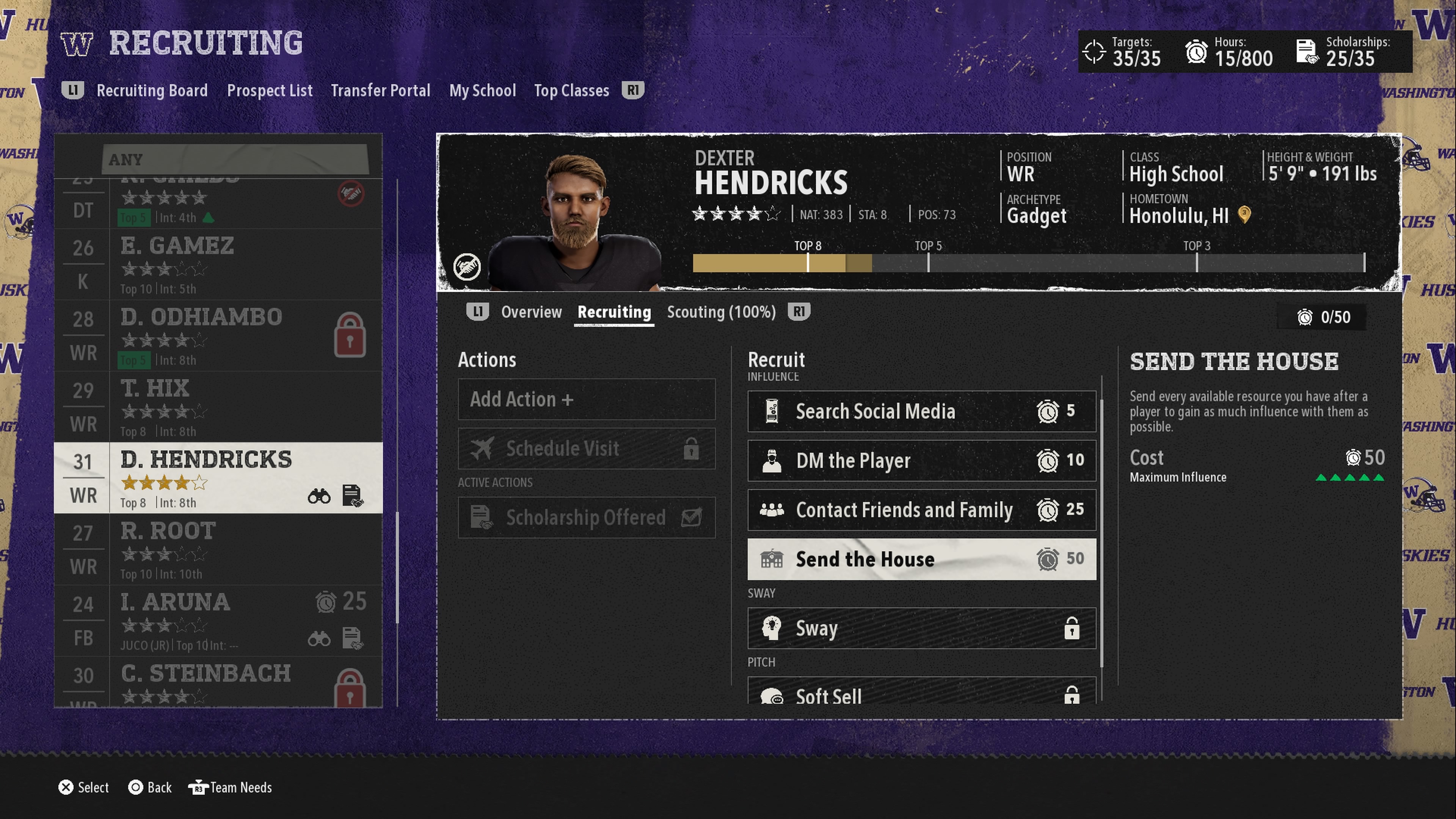
Once the season is underway, you need to commit hours to winning over your recruits. While you’re doing this, prospects gradually narrow down their top schools from Open, to Top 8, Top 5, Top 3, and finally Commitment. Your priority is to stay above their cut-off line each week.
Weekly digests, tales from the communities you love, and more
Recruiting hours are based on your team’s prestige. A five-star college starts out with 1,000 hours, while a one-star school gets just 350. Also, you can only spend 50 hours on a single prospect, unless you have the Always Be Crootin’ ability. This grants 70 hours at specific positions.
Here’s a list of what you can do with those 50 hours, for each prospect:
- Scout: 10 hours (it usually takes between three and five sessions to fully scout one player)
- Offer Scholarship: 5 hours
- Search Social Media: 5 hours
- DM The Player: 10 hours
- Contact Friends and Family: 25 hours
- Send The House: 50 hours
- Soft Sell: 20 hours (only available when in recruit has chosen top five schools)
- Hard Sell: 40 hours (only available when in recruit has chosen top five schools)
- Sway: 30 hours (only available when in recruit has chosen top five schools)
- Schedule Visit: 40 hours (see the final point of this guide)
College Football 26 recruiting school grades
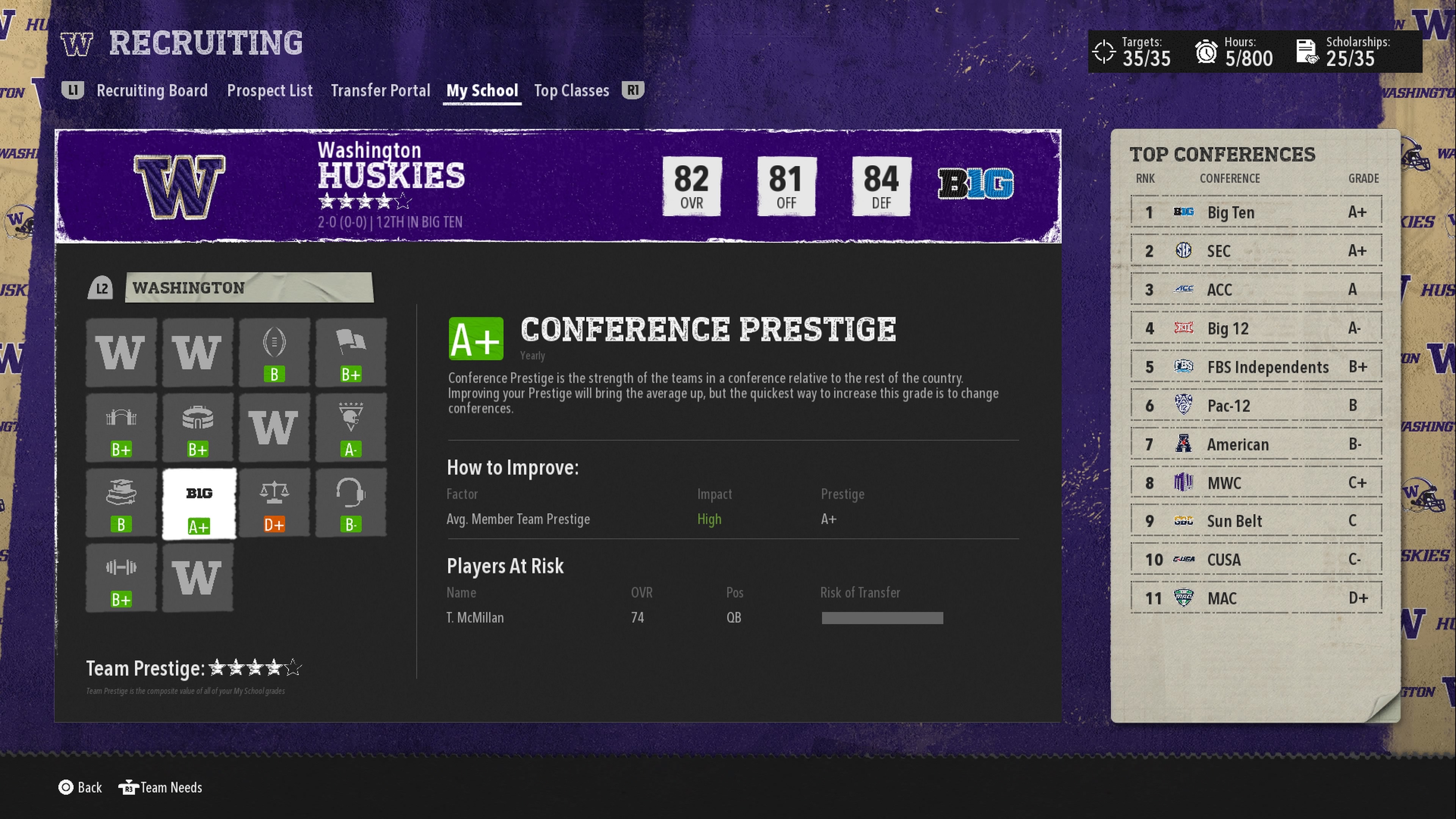
Your school grades are vital in attracting prospects. There are 14 in total. Most can be improved – or get worse – as you progress, meaning results really do matter. When you talk to players or bring them in for visits, try to match your strengths with theirs, using the color-coded symbols. Green is good, red is a no-go. Remember, you can increase – or hurt! – your chances of winning with some College Football 26 sliders.
- Academic Prestige: How good your school is academically. This grade cannot be changed.
- Athletic Facilities: The quality of athletic facilities for the program.
- Brand Exposure: A team’s overall brand recognition.
- Campus Lifestyle: A rating of the area surrounding the campus, and campus itself. This grade cannot be changed.
- Championship Contender: How close your team is to winning a championship, based on current rankings.
- Coach Prestige: How good the school’s coaching staff is, especially the Head Coach.
- Coach Stability: How long the coaching staff has been in place and is likely to keep their jobs over four years.
- Conference Prestige: The overall strength of the conference your college plays in.
- Playing Style: A representation of how you play. For example, Field General quarterbacks' 'playing style' grade is dictated by passing yards per game.
- Playing Time: How long it will take for a player to become a starter in your college.
- Pro Potential: How likely it is that players on the current roster will make it to the NFL.
- Program Tradition: Historic success based on Championships, wins, and awards.
- Proximity to Home: Where your school is in relation to the recruit’s home pipeline.
- Stadium Atmosphere: This is set according to the stadium’s Toughest Places to Play ranking, which is based on home wins.
College Football 26 schedule visit and securing a prospect
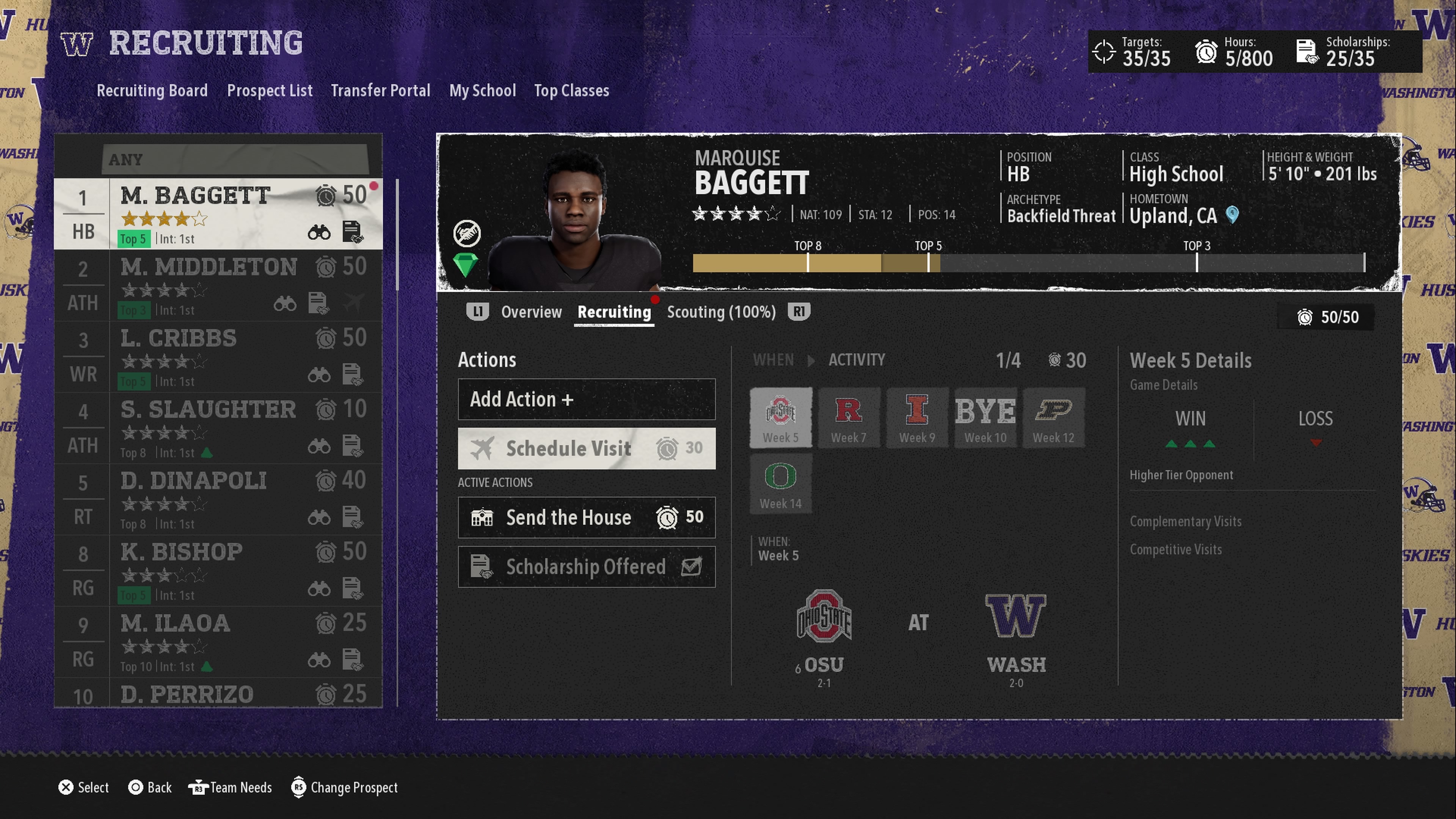
As each season unfolds, the final element of securing any key target is the Schedule Visit option. This costs 40 hours from your team allocation, but doesn’t count against the 50 individual hours. It’s only available once a prospect has finalised his top five, and been offered a scholarship by your school.
You can host up to four prospects per visit, and they’re only available for home games or bye weeks. There are 14 activities to choose from. Again, try to sync up a prospects’ interests with your strengths! Also carefully consider their position on the field. Bringing two QBs in on the same week is likely to put one or both off, due to them being in direct competition. However, a QB and LT pairing might develop chemistry. Also, be sure to win the match in question! No high school wonderkid wants to join a team of losers…
Once your prospects have verbally committed, it’s all about maintaining your promises until signing day. For instance, if a target have Championship Contender as a Deal Breaker and you lose five games in a row, there’s a significant risk of them committing elsewhere. Hopefully that doesn’t happen and, once signing day is done, you can relax and start hammering some big names from the College Football 26 best teams list. Good luck out there, coach. What's that? You want even more NCAA 26 tips? Then jump into our College Football 26 best playbooks guide.
© GamesRadar+. Not to be reproduced without permission.

I'm GamesRadar's sports editor, and obsessed with NFL, WWE, MLB, AEW, and occasionally things that don't have a three-letter acronym – such as Chvrches, Bill Bryson, and Streets Of Rage 4. (All the Streets Of Rage games, actually.) Even after three decades I still have a soft spot for Euro Boss on the Amstrad CPC 464+.
You must confirm your public display name before commenting
Please logout and then login again, you will then be prompted to enter your display name.
